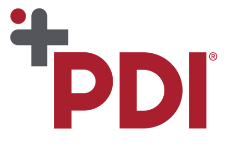Interventional Care


We notice that you are visiting us from . This site only services US-based visitors. Would you like to visit the site that is appropriate for your location?

Nature (and ultimately any need) abhors a vacuum. Quality collaboratives and ranking agencies such as the Leapfrog Group 1 or US News and World Report Best Hospital Rankings 2 have sought to offer potential consumers an alternative and more user-friendly display of quality metrics (often by their own design), though participation may be voluntary. While specific healthcare-based outbreaks attain national media attention, these episodes are thankfully sporadic and not representative of the majority of healthcare facilities.
Interestingly, some investigative journalism outlets are systematizing publicly available data into portals for the public to search and compare healthcare institutions and individual providers. For example, ProPublica has developed and released applications examining penalties, fines and deficiencies in nursing homes 3, wait times and violations for emergency departments 4, and medical device and pharmaceutical company compensation of healthcare providers 5. Meanwhile, the Association of Health Care Journalists has made available a database of the complete detailed reports of hospital inspections and any identified violations from acute care facilities across the United States since 2015 as provided by CMS 6. These reports are extremely detailed such that they often read “During observation of care on 12/11/2017 at 1:05 PM….nursing assistant A removed gloves and left Patient #9’s room without performing hand hygiene.” The same organization also provides detailed financials for healthcare organizations, including executive leadership compensation 7. It is unknown to what, if any, extent these resources are known or utilized by the average patient seeking care in the United States today.
In 2019, Deloitte released the results of a global survey of over 26,000 adults around the world, including 4,530 in the US covering a wide array of healthcare related topics 8. In response, 53% of participants in the US answered that they were highly motivated to use websites that offer quality and satisfaction data of doctors and hospitals. On an unrelated note, 55% stated that they consistently “followed a healthy diet…and (consumed) a limited amount of processed foods” and 47% stated that they exercised according to their doctor’s recommendations8. If we are to take the respondents at their word and assume they form a representative sample of US healthcare consumers this means that nearly half of all potential patients are than highly motivated to examine quality or satisfaction data of doctors or hospitals.
So what does the consumer/patient want and what are they amenable to? While healthcare industry leaders recognize the importance of healthcare consumerism, the focus seems more aligned with patient access, convenience and efficiencies as recently reported by a major health system in the southwest US 9. While convenience may drive up patient satisfaction in many respects, avoidable adverse patient outcome such as healthcare associated infections is likely to undermine such gains. Of note, technology is playing a role as well. Patients are willing to share their health metrics collected from their personal (e.g. fitness) devices with their provider and are open to virtual/remote encounters-especially if it gets them seen sooner 8.
A decade in, healthcare-associated infections are on the decline, data is everywhere yet seemingly underutilized with the direction focused on convenience over quality. Consumer advocates, educators, healthcare providers and industry partners must work together towards creating a more informed and engaged public while continuing to strive to provide the safest patient care possible.